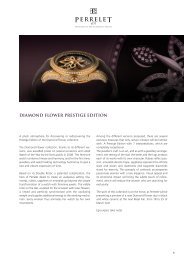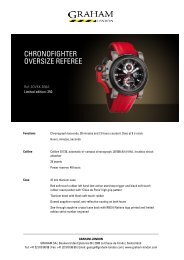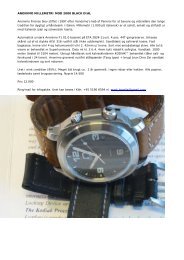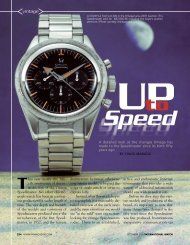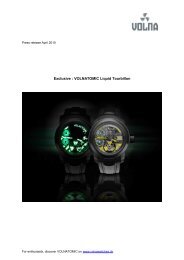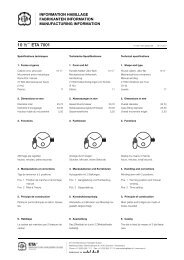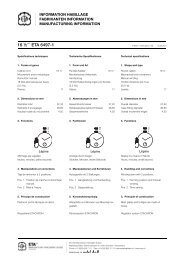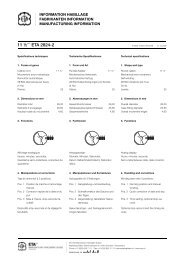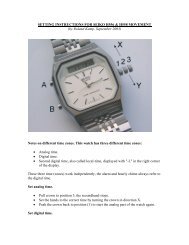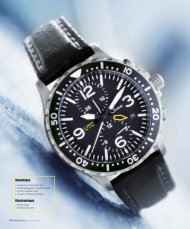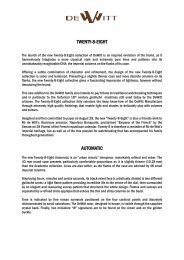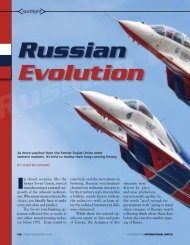Phenakistoscope Timepiece.pdf
Phenakistoscope Timepiece.pdf
Phenakistoscope Timepiece.pdf
Create successful ePaper yourself
Turn your PDF publications into a flip-book with our unique Google optimized e-Paper software.
Angular Momentum<br />
of Switzerland<br />
<strong>Phenakistoscope</strong>
<strong>Phenakistoscope</strong><br />
History<br />
Although this principle had been recognized by the<br />
Greek mathematician Euclid and later in experiments<br />
by Newton, it was not until 1829 that this principle<br />
became firmly established by the Belgian Joseph<br />
Plateau. Plateau planned it in 1829 and invented it<br />
in 1832. Later the same year the Austrian Simon von<br />
Stampfer invented the stroboscopic disk, a similar<br />
machine.<br />
Technology<br />
The phenakistoscope use a spinning disc attached<br />
vertically on a handle. Around the center of the disc a<br />
series of pictures was drawn corresponding to frames<br />
of the animation; around its circumference was a se-<br />
ries of radial slits. The user would spin the disc and<br />
look through the moving slits at the disc‘s reflection<br />
in a mirror.<br />
The scanning of the slits across the reflected images<br />
kept them from simply blurring together, so that the<br />
user would see a rapid succession of images with the<br />
appearance of a motion picture. A variant of it had<br />
two discs, one with slits and one with pictures; this<br />
was slightly more unwieldy but needed no mirror.<br />
Unlike the zoetrope and its successors, the phenakis-<br />
toscope could only practically be used by one person<br />
at a time. The phenakistoscope was only famous for<br />
about two years due to the changing of technology.<br />
Etymology<br />
The first part of the term phenakistoscope comes<br />
from the root Greek language phenakizein, meaning<br />
„to deceive“ or „to cheat“, as it deceives the eye by<br />
making the pictures look like an animation. As tech-<br />
nology along with popularity increased in the early<br />
twentieth century, coin operation was utilized on ma-<br />
chines, coining the term ‚Nickelodeon, which would<br />
be later be used somewhat freely to describe events<br />
charging five cents or a „nickel.“<br />
<strong>Phenakistoscope</strong> <strong>Timepiece</strong><br />
Angular Momentum has created the <strong>Phenakistoscope</strong><br />
<strong>Timepiece</strong> with its Revolving Hour Disk, combined<br />
with a classic animation disk of a phenakistoscope.<br />
As the time runs, the images on the animation disk<br />
change. When the wearer spins the hour disk by<br />
crown, the „motion picture“ will be visible.
<strong>Phenakistoscope</strong><br />
„Memento Mori“<br />
Stainless steel, mechanical hand-wound movement, case caliber 40.00 mm.<br />
<strong>Phenakistoscope</strong> Hour disk with a motion picture of dancing Skeleton with a scythe. Red Breguet numerals<br />
and „Souscription“ indexes
<strong>Phenakistoscope</strong><br />
„Litle Devil“<br />
Stainless steel, mechanical hand-wound movement, case caliber 40.00 mm.<br />
<strong>Phenakistoscope</strong> Hour disk with a motion picture of a grimacing little devil. White Breguet numerals and<br />
„Souscription“ indexes




